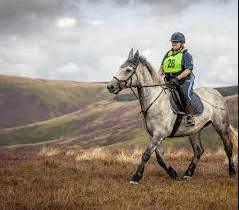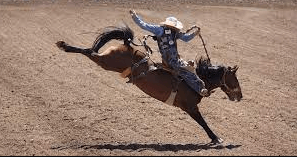What Are The Main Rules Of Endurance Riding?

Endurance riding is a challenging and exhilarating equestrian sport that tests both the physical endurance and mental fortitude of both horse and rider. To ensure fair competition and the well-being of the horses involved, there are several main rules that must be understood and followed.
These rules serve to maintain a level playing field, prioritize the welfare of the horses, and promote a strong partnership between horse and rider.
The first and foremost rule in endurance riding is to prioritize the well-being and welfare of the horse. This means ensuring that the horse is fit, healthy, and in good condition before participating in any rides. Riders must also provide proper care during rides by monitoring their horse’s heart rate, hydration levels, and overall health throughout the course. Additionally, riders must adhere to strict veterinary checks before, during, and after rides to ensure that their horse remains sound and capable of continuing on with the competition.
Building a strong bond of trust and partnership with your horse is another crucial aspect of endurance riding. The success of this sport relies heavily on mutual understanding between rider and equine partner. Riders should invest time in training their horses properly to develop stamina, agility, responsiveness, obedience, as well as effective communication skills. It is essential for riders to establish a harmonious relationship based on trust so they can effectively guide their horses through long-distance rides without causing undue stress or discomfort.
In conclusion, understanding and abiding by the main rules of endurance riding is vital for both fair competition among riders as well as maintaining the well-being of our equine companions. By prioritizing their welfare through proper care before, during, and after rides while building a strong bond based on trust with our horses we can ensure an enjoyable experience for all participants in this thrilling equestrian discipline.
Prioritize the Well-being and Welfare of the Horse
The paramount concern in endurance riding is the preservation of the horse’s well-being and welfare throughout the duration of the ride. This includes ensuring that the horse is properly nourished and receives adequate nutrition before, during, and after the ride.
Horse nutrition plays a crucial role in maintaining its energy levels and overall health during long-distance rides. Endurance riders must carefully plan their horse’s diet to meet its specific needs, considering factors such as age, weight, breed, and workload.
In addition to proper nutrition, proper conditioning techniques are essential to ensure that the horse is physically fit for endurance riding. Gradual increases in training intensity and duration help strengthen muscles, improve cardiovascular fitness, and prevent injuries.
It is important for riders to be knowledgeable about these conditioning techniques to avoid overexertion or strain on their horses’ bodies.
By prioritizing the well-being and welfare of their horses through proper nutrition and conditioning techniques, endurance riders can ensure a safe and enjoyable experience for both themselves and their equine partners.
Build a Strong Bond of Trust and Partnership with Your Horse
Establishing a solid foundation of trust and partnership with one’s equine companion is crucial in the pursuit of long-distance equestrian endeavors.
Developing communication skills and establishing a consistent training routine are essential components of building this bond.
Communication skills involve understanding the horse’s body language, cues, and responses, as well as effectively communicating one’s own intentions through clear aids and signals.
This allows for a seamless flow of information between rider and horse, promoting harmony and cooperation throughout the endurance ride.
Read also: What Are The Main Phases In Eventing?
Additionally, establishing a consistent training routine helps to build trust by providing structure, predictability, and familiarity for the horse.
Consistency allows the horse to understand what is expected of them and reduces anxiety or confusion during rides.
By investing time in developing communication skills and implementing a consistent training routine, riders can cultivate a strong bond with their horses that not only enhances performance but also deepens their connection on an emotional level.
Understand and Abide by the Main Rules of Endurance Riding
Developing a thorough understanding of the regulations and guidelines that govern the sport is essential for participants in long-distance equestrian activities. Endurance riding, as a competitive sport, has specific requirements that riders must adhere to in order to ensure fair play and maintain the well-being of both horse and rider.
Some of the main rules of endurance riding include:
- Competition requirements: Riders must complete a veterinary check before and after each ride to assess their horse’s fitness and ensure it is in good health. They must also adhere to specified speed limits during the race, with penalties imposed for exceeding these limits. Additionally, riders are responsible for carrying mandatory equipment such as water containers, first aid kits, and identification tags.
- Training techniques: In preparation for endurance rides, riders must implement appropriate training techniques to condition their horses for long distances. This includes gradually increasing mileage over time and incorporating regular rest days into their training schedule. Riders should also focus on developing their horse’s cardiovascular fitness through interval training and hill work.
By understanding and abiding by these main rules of endurance riding, participants can compete in a safe and fair manner while ensuring the welfare of their equine partners.
Frequently Asked Questions
How important is the rider’s physical fitness in endurance riding?
The rider’s physical fitness is of utmost importance in endurance riding. Adequate training and conditioning are necessary to withstand the rigorous demands of long-distance riding, ensuring both the horse and rider can safely complete the event.
What type of horse is best suited for endurance riding?
The best horse breeds for endurance riding include Arabian, Akhal-Teke, and Thoroughbred due to their stamina, athleticism, and ability to endure long distances. Training tips for endurance riding involve gradual conditioning, proper nutrition, and regular veterinary check-ups.
Are there any specific regulations for the use of equipment and gear in endurance riding?
Equipment regulations and required gear are essential aspects of endurance riding. Riders must adhere to specific rules regarding the use of equipment, including saddle type, bridle style, and protective gear for both the horse and rider. These regulations ensure the safety and welfare of all participants.
How do riders handle veterinary checks during an endurance ride?
During an endurance ride, riders must handle veterinary checks to ensure the horse’s health. These checks involve assessing the horse’s vital signs, soundness, and overall well-being. Proper management of these checks is crucial to maintain the horse’s performance and prevent any potential health issues.
Are there any specific strategies or tactics to conserve energy during an endurance ride?
Strategies and tactics to conserve energy during an endurance ride include maintaining a steady pace, practicing efficient riding techniques, managing hydration and nutrition, utilizing appropriate gear and equipment, and strategically planning rest breaks along the route.
Conclusion
In conclusion, the main rules of endurance riding are essential to ensure the well-being and welfare of the horse, as well as to establish a strong bond of trust and partnership between the rider and their equine companion. These rules serve as a guiding compass, steering riders towards responsible horsemanship and promoting fair competition.
Just like a ship navigating through treacherous waters, endurance riders must prioritize the safety and health of their horses above all else. By adhering to strict veterinary checks along the course, riders can monitor their horse’s physical condition and make informed decisions regarding their welfare. This ensures that no harm comes to these magnificent creatures who willingly embark on this challenging journey with us.
Moreover, endurance riding is not just a sport; it is an allegory for life itself. The challenges faced during these rides reflect the obstacles we encounter in our own lives. Through discipline, perseverance, and an unwavering spirit, both horse and rider overcome adversity together. The main rules of endurance riding provide a structure that fosters respect for nature, empathy for animals, and personal growth for individuals.
In this grand tapestry of equestrian pursuits, endurance riding shines as a testament to human-horse harmony. It is more than just racing against time; it is about forging an unbreakable connection with these majestic beings who carry us through miles upon miles of rugged terrain. Let us embrace these rules with reverence and gratitude as we embark on our own journeys of self-discovery alongside our loyal equine companions.



